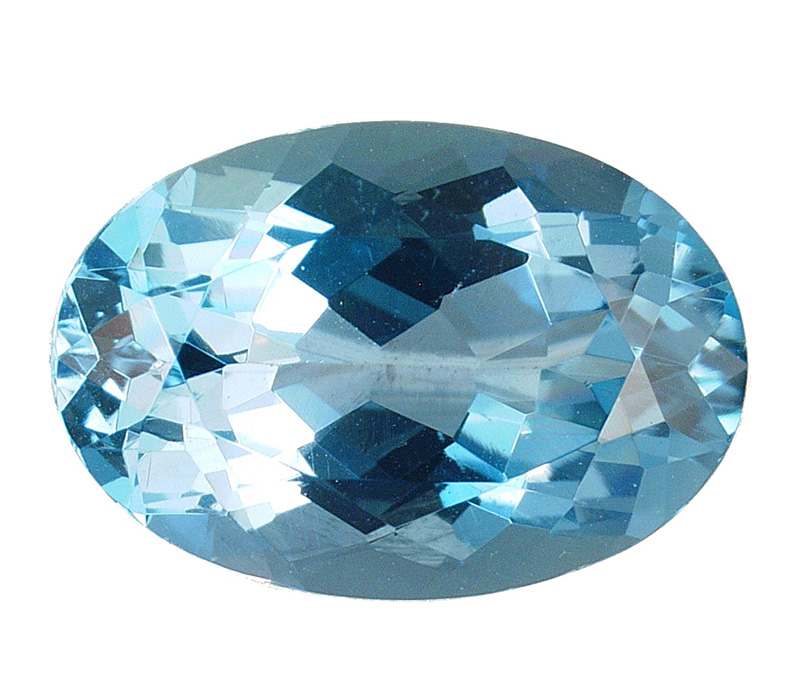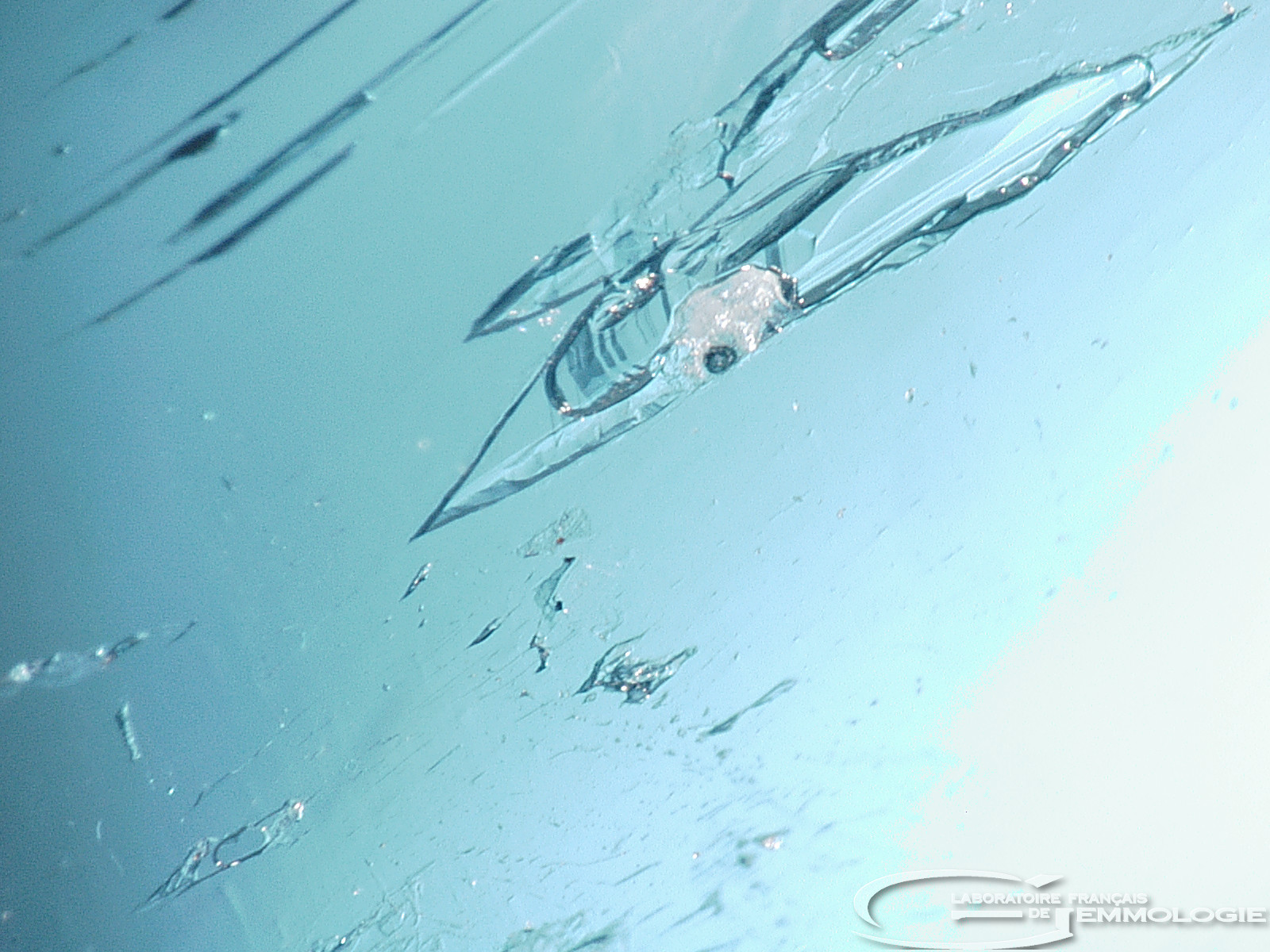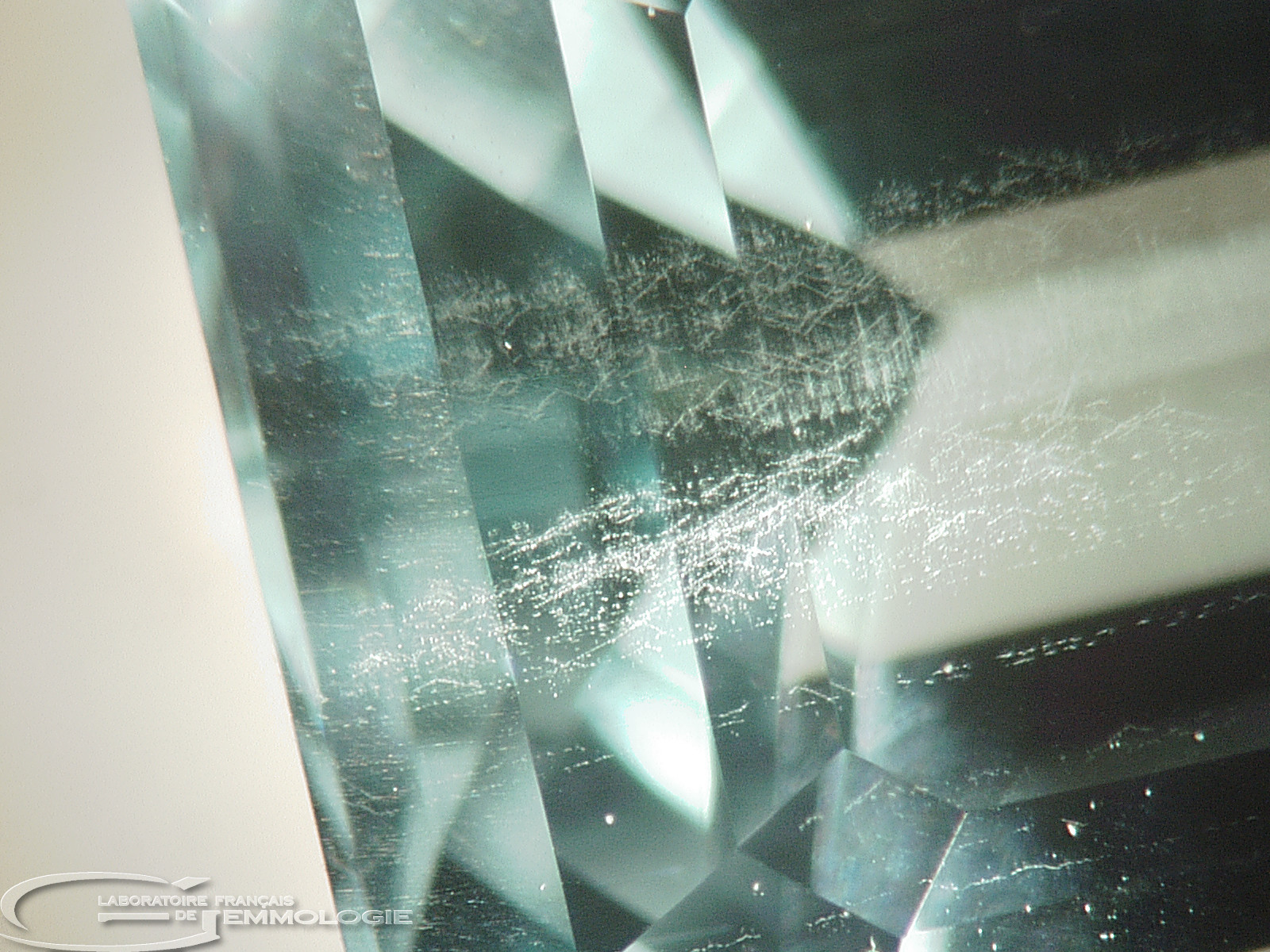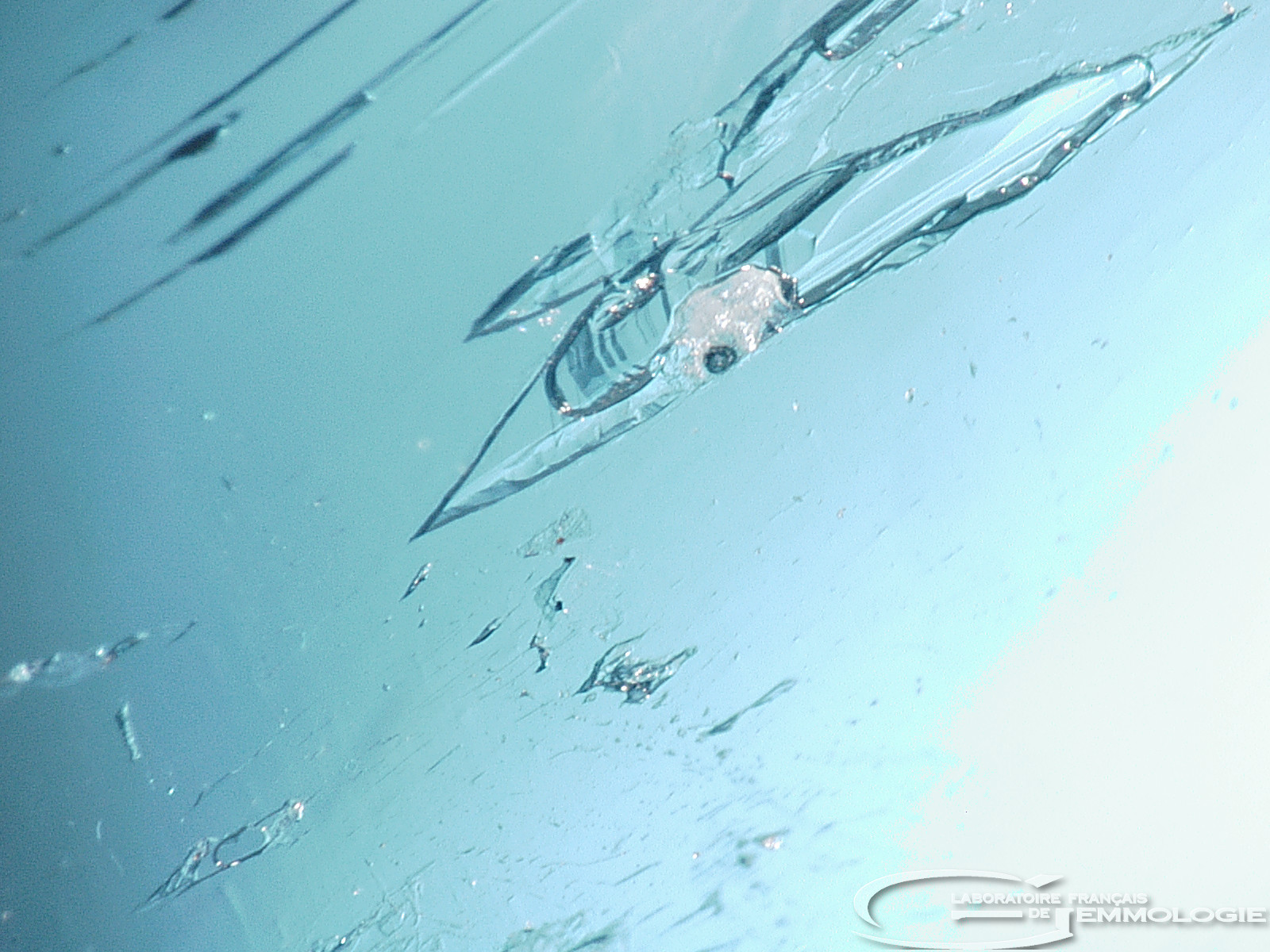GEMSTONE LIBRARY
AQUAMARINE
Aquamarine is a blue to blue-green beryl coloured by iron or a coloured centre following irradiation. If the blue colour is saturated, aquamarine can bear the name Santa Maria aquamarine.
Aquamarine can come from many countries: Brazil, Madagascar, India, Nigeria, Mozambique, Pakistan, etc.
Each gemstone brought to the laboratory is analysed and identified. In the case of aquamarine, thermal treatments are difficult to detect.
CHARACTERISTICS
- Name:Aquamarine
- Mineralogical nature:Beryl
- Colour:Light blue to dark blue (Santa Maria), blue-green
- Crystal system:Hexagonal
- Chemical composition:Be3Al2(Si6O18)
- Causes of colour:Fe2+ and Fe3+, coloured CO3- and NO3- centres due to irradiation (Maxixe type)
- Density:68 to 2.77
- Hardness:5
- Cleavage:None
- Fracture:Conchoidal
- Optic sign:Negative uniaxial
- Refractive index:no: 1.574 to 1.600 – n: 1.568 to 1.592
- Birefringence:006 to 0.009
- Dispersion:014
- Pleochroism:Colourless to more or less clear blue depending on the saturation of the stone
- UVL:Inert
- UVC:Inert
- Treatments:Irradiation
- Syntheses:Hydrothermal dissolution
- Geographical origin:Madagascar, Brazil, Russia, Namibia, Sri Lanka, Myanmar, Mozambique, Nigeria, India, Afghanistan, Pakistan, USA, etc.







